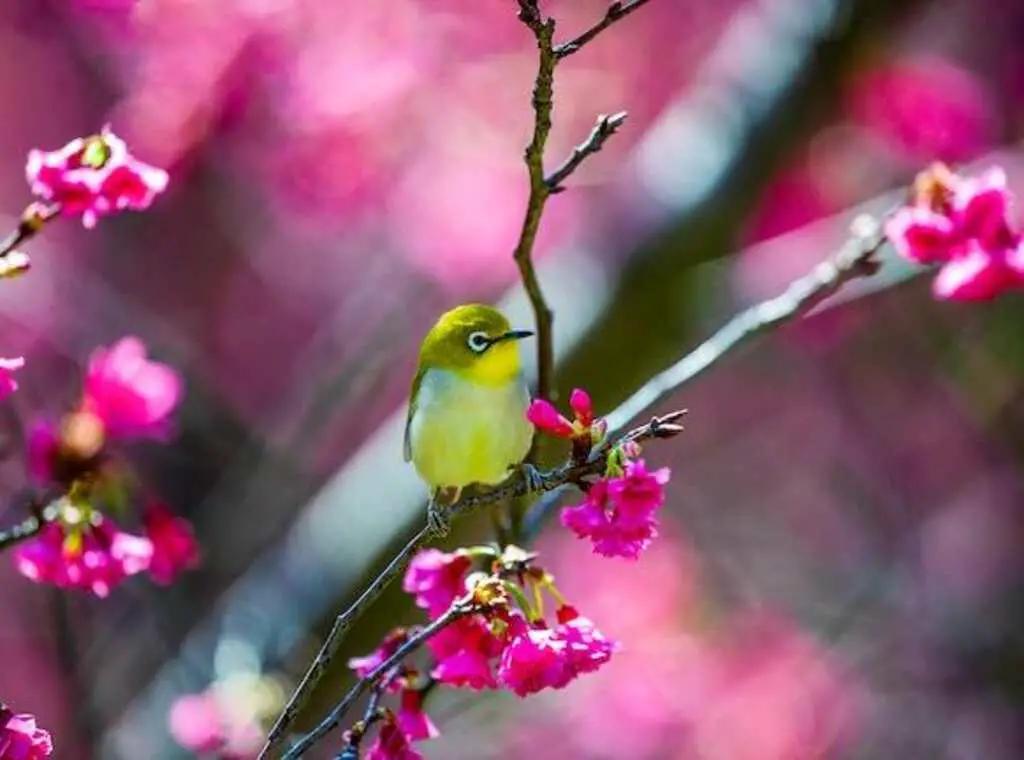Are you tired of walking outside to find your beloved flower pots turned into bird sanctuaries? Don’t fear, we have the solution for you! Keeping Birds Out of Your Flower Pots is easier than you think, and we’ve got all the tips and tricks to help.
From physical barriers to natural and chemical deterrents, we’ve got you covered. So, say goodbye to those pesky birds and hello to beautiful, bird-free flowers!
Table of Contents
- 1 How To Keep Birds Out Of Flower Pots
- 1.1 Understanding Why Birds Are Attracted To Your Flower Pots
- 1.2 Identifying What Type of Bird is Visiting Your Flower Pots
- 1.3 Deterring Birds from Your Flower Pots with Physical Barriers
- 1.4 Exploring Natural Deterrents to Keep Birds Away from Your Flower Pots
- 1.5 Utilizing Sound Deterrents to Discourage Birds from Visiting Your Flower Pots
- 1.6 Using Visual Deterrents to Scare Away Birds from Your Flower Pots
- 1.7 Applying Chemical Deterrents to Discourage Birds from Your Flower Pots
- 1.8 Setting Up Feeders to Draw Birds Away from Your Flower Pots
- 1.9 The Pros and Cons of Each Method
- 1.10 How to Stop Birds From Eating Your Flowers
- 1.11 How to Stop Birds From Nesting in Your Flower Pots
- 1.12 How to Stop Birds From Digging in Your Flower Pots
- 1.13 Tips and Tricks to Make Bird-Proofing Your Flower Pots Easier
- 2 Conclusion
- 3 FAQs: Keeping Birds Out of Your Flower Pots
- 3.1 What is the best way to keep birds away?
- 3.2 What type of deterrents should I use?
- 3.3 How often do I need to reapply deterrents?
- 3.4 How do I protect my containers from birds?
- 3.5 How do I protect my flowers from birds?
- 3.6 What is digging up my potted plants at night UK?
- 3.7 How does aluminum foil keep birds away?
- 3.8 What is a good bird deterrent?
- 3.9 Will wind spinners keep birds away?
- 3.10 What is the best animal repellent for flowers?
- 3.11 Can birds be around flowers?
- 3.12 Will spraying vinegar keep birds away?
- 3.13 What shiny things keep birds away?
- 3.14 Will Vaseline keep birds away?
- 4 Author
How To Keep Birds Out Of Flower Pots
Understanding Why Birds Are Attracted To Your Flower Pots
Birds are attracted to flower pots for a variety of reasons. They have a natural instinct to search for food, and flower pots are a great source for insects and other small critters that birds feed on.
Additionally, flower pots provide a great place for birds to build nests, giving them shelter from the elements. If you’re looking to keep birds away from your flower pots, it’s important to first understand why they are drawn to them in the first place.
Once you have a better understanding of why birds are attracted to your flower pots, you can start to take measures to make sure they stay away.
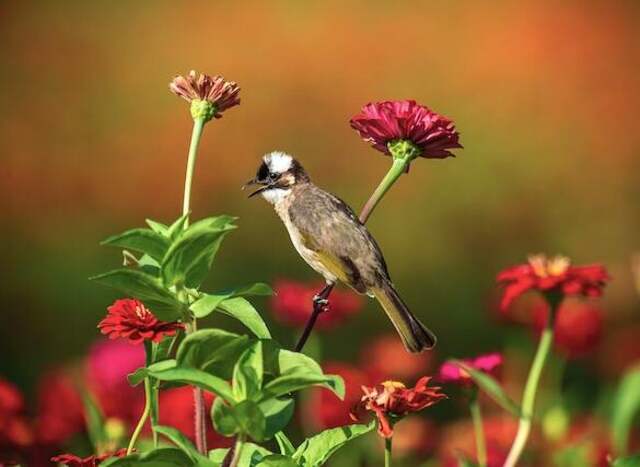
Identifying What Type of Bird is Visiting Your Flower Pots
Identifying what type of bird is visiting your flower pots is the first step in keeping them away. There are many different species of birds, and each one has different behaviors that you need to take into account when trying to deter them.
Before you start bird-proofing your flower pots, it’s important to figure out what kind of bird is visiting them. Look for common signs such as feathers, droppings, beak marks, or nests.
You can also try setting up a bird feeder to attract a specific species of bird. Once you know what kind of bird is visiting your flower pots, you can start to take the necessary steps to keep them away.
| Bird Species | Characteristics | How to Keep Them Out | Additional Information |
|---|---|---|---|
| Sparrows | Small and social birds | Use mesh or netting to cover flower pots | Sparrows love to build nests in flower pots and can damage plants by digging for food |
| Pigeons | Large birds with plump bodies | Place spikes or strips around the edges of flower pots | Pigeons can carry diseases and leave droppings that can damage plants and spread illness |
| Starlings | Small and aggressive birds | Use decoys or scare tactics to keep them away | Starlings can damage plants by digging for food and may also steal food from other birds |
| Finches | Small, colorful birds | Use mesh or netting to cover flower pots | Finches can damage plants by digging for food and may also steal food from other birds |
| Robins | Medium-sized birds with red breasts | Use mesh or netting to cover flower pots | Robins can damage plants by digging for food and may also steal food from other birds |
| Hummingbirds | Small, fast-flying birds with long beaks | Use hummingbird feeders to attract them away from flower pots | Hummingbirds are attracted to bright colors and sweet nectar, so providing a feeder can help keep them away from flower pots |
| Jays | Medium-sized birds with blue feathers | Use mesh or netting to cover flower pots | Jays can damage plants by digging for food and may also steal food from other birds |
| Woodpeckers | Medium-sized birds with long beaks | Use decoys or scare tactics to keep them away | Woodpeckers can damage plants and flower pots by pecking at them in search of insects |
Remember to also keep in mind any local regulations or laws regarding bird protection before taking any action to keep birds away from your flower pots.
Deterring Birds from Your Flower Pots with Physical Barriers
One of the best ways to keep birds away from your flower pots is to create physical barriers. This can be done by installing mesh screens or netting around the flower pots.
The mesh should be tight enough that birds won’t be able to fit through, but loose enough that it won’t damage the flowers. You can also use bird spikes or plastic coils to make the area around the flower pots less desirable for birds.
If you have large flower pots, you may want to invest in a wire cage or a wooden box to cover them, as this will make it more difficult for birds to get to the flowers.
| Physical Barriers | Description |
|---|---|
| Mesh Screens or Netting | Install mesh screens or netting around the flower pots that are tight enough to prevent birds from entering, but loose enough not to damage the flowers. |
| Bird Spikes or Plastic Coils | Use bird spikes or plastic coils to make the area around the flower pots less desirable for birds. |
| Wire Cage or Wooden Box | Invest in a wire cage or wooden box to cover large flower pots, making it more difficult for birds to get to the flowers. |
Exploring Natural Deterrents to Keep Birds Away from Your Flower Pots
When it comes to keeping birds away from your flower pots, you might be tempted to take the easy route and rely on chemical deterrents.
However, there are some natural deterrents that can be just as effective at keeping birds away without having to use harsh chemicals. One of the most popular natural deterrents is the use of wind chimes.
The sound of the chimes will scare birds away without being too harsh. Another natural deterrent is to use artificial birds of prey to scare off the real birds. You can also use reflective objects like aluminum foil to scare birds away.
Finally, you can use natural predators like cats or dogs to scare away birds. While these methods may be effective, you should be aware that they can also be dangerous to other wildlife.
For this reason, it’s important to take extra safety precautions if you’re using these methods.
| Natural Deterrents | Description |
|---|---|
| Wind Chimes | Use wind chimes to scare birds away with the sound they produce. |
| Artificial Birds of Prey | Use artificial birds of prey to scare off real birds. |
| Reflective Objects | Use reflective objects like aluminum foil to scare birds away. |
| Natural Predators | Use natural predators like cats or dogs to scare away birds, but be cautious as this can be dangerous to other wildlife. |
Note: It is important to take extra safety precautions when using natural predators, and to be aware that these methods can also be dangerous to other wildlife.
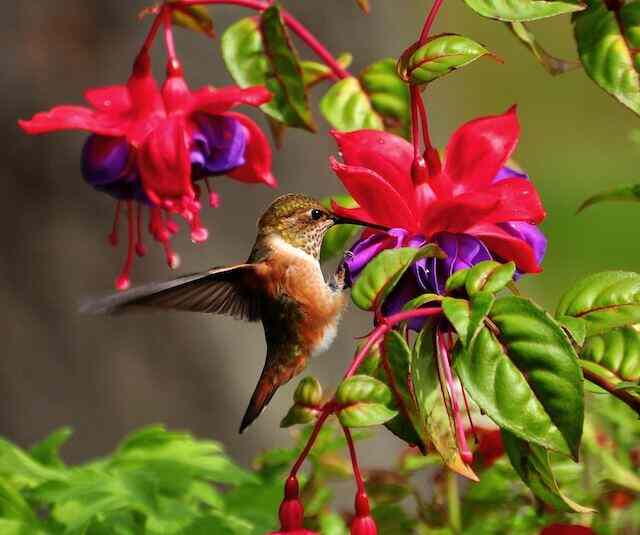
Utilizing Sound Deterrents to Discourage Birds from Visiting Your Flower Pots
When it comes to keeping birds away from your flower pots, one of the best methods is utilizing sound deterrents. There are several different types of sound deterrents available, including motion-activated ultrasonic devices and recorded bird distress calls.
These devices work by emitting a loud sound which is unpleasant to birds and acts as a warning to stay away. Motion-activated devices are especially useful as they can be triggered by the presence of a bird, and can be adjusted to different levels of sound intensity.
Recorded bird distress calls can also be used, and can be effective in deterring birds from visiting your flower pots.
| Sound Deterrents | Description |
|---|---|
| Motion-Activated Ultrasonic Devices | Emit a loud sound which is unpleasant to birds and acts as a warning to stay away. |
| Recorded Bird Distress Calls | Play recorded bird distress calls that can be effective in deterring birds from visiting your flower pots. |
Using Visual Deterrents to Scare Away Birds from Your Flower Pots
Visual deterrents can be an effective way to scare away birds from your flower pots. These deterrents can range from simple items like balloons or streamers to more elaborate devices like bird scarers or decoys.
Balloons and streamers can be hung from flower pots or placed around the area to create movement that will scare birds away. Bird scarers, or bird scare tape, emit a loud noise when disturbed, and decoys can be used to mimic the presence of a predator.
All of these methods can be used to make birds feel unwelcome and scare them away from your flower pots.
| Visual Deterrent | Description | Effectiveness | Cost |
|---|---|---|---|
| Balloons | Simple items that can be hung from flower pots or placed around the area to create movement | Low | Low |
| Streamers | Long, thin strips of material that can be hung to create movement and scare birds away | Low | Low |
| Bird scarers | Emit a loud noise when disturbed | High | High |
| Decoys | Mimic the presence of a predator | High | Medium |
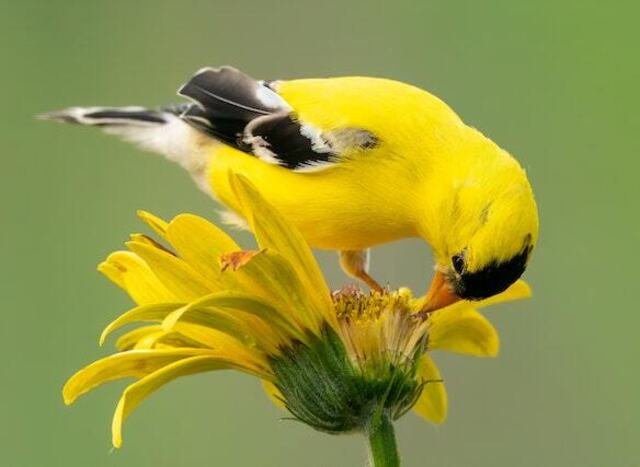
Applying Chemical Deterrents to Discourage Birds from Your Flower Pots
Chemical deterrents are one of the most effective ways to discourage birds from visiting your flower pots. Chemical deterrents come in a variety of forms, including sprays, granules, and bait.
Sprays are most effective when applied directly to the soil or foliage of your flower pots, as they will last longer and provide more protection. Granules are usually applied to the soil around the flower pots and must be replenished regularly.
Bait is usually placed on a plate or in a shallow container near the flower pots and needs to be replaced frequently.
All chemical deterrents must be applied in accordance with the manufacturer’s instructions and should be used in conjunction with other methods for maximum effectiveness.
| Chemical Deterrent | Description | Effectiveness | Cost |
|---|---|---|---|
| Sprays | Applied directly to the soil or foliage of your flower pots and lasts longer | High | Medium |
| Granules | Applied to the soil around the flower pots and needs to be replenished regularly | Medium | Low |
| Bait | Placed on a plate or in a shallow container near the flower pots and needs to be replaced frequently | Medium | Low |
Note: Effectiveness and cost may vary depending on the brand and specific product used. It is important to follow the manufacturer’s instructions for safe and effective use of these deterrents.
Here are some general guidelines on how to apply chemical deterrents safely:
- Read and follow the label instructions carefully: Before applying any chemical deterrent, make sure to read the label instructions thoroughly. The label provides important information on how to use the product safely and effectively. It will also provide information on how to dispose of the product safely after use.
- Choose the appropriate product: Different chemical deterrents are designed for different types of wildlife. Choose a product that is specifically designed for the animal you are trying to deter.
- Wear appropriate protective equipment: Always wear appropriate protective equipment when applying chemical deterrents. This can include gloves, protective eyewear, and a mask. Make sure to follow the label instructions regarding what type of protective equipment is recommended.
- Apply the product as directed: Apply the product according to the label instructions. This may involve spraying, spreading, or placing the product in specific areas. Avoid applying the product in areas where other wildlife may come into contact with it.
- Store the product safely: Store the product in a cool, dry place away from children and pets. Follow the label instructions regarding how to store the product.
- Dispose of the product safely: Dispose of any leftover product and packaging according to the label instructions. Do not pour the product down the drain or dispose of it in the trash unless specifically instructed to do so.
- Monitor the effectiveness of the product: Keep an eye on the area where you have applied the chemical deterrent to ensure it is effective. If the product is not working as intended, you may need to reapply or try a different product.
Remember, chemical deterrents should always be used as a last resort. Before resorting to chemical solutions, consider non-chemical alternatives such as physical barriers or changing the animal’s habitat.
Additionally, always consult with a wildlife professional or pest control expert if you are unsure about the best way to deal with a wildlife problem.
Setting Up Feeders to Draw Birds Away from Your Flower Pots
Setting up feeders to draw birds away from your flower pots is a great way to keep them from ruining your plants. By providing a consistent source of food, you can encourage the birds to feed away from your flowers and the pots they are planted in.
This method is especially useful if you have a large number of birds in your area, since they will be more likely to flock to the feeders instead of your flower pots.
You can purchase a variety of feeders to serve different types of birds, such as thistle feeders, suet feeders, and platform feeders.
Once you have the feeders set up, make sure to keep them consistently filled with food to ensure the birds keep coming back.
| Method | Pros | Cons |
|---|---|---|
| Providing a consistent source of food | Encourages birds to feed away from flower pots | May not be effective for larger birds or if feeders are not regularly filled |
| Purchase of different types of feeders | Serves different types of birds | May require regular cleaning and maintenance |
The Pros and Cons of Each Method
When it comes to keeping birds away from your flower pots, there are a variety of methods to choose from. Each of these methods has its own unique set of pros and cons that need to be taken into consideration before deciding which one is right for you.
Physical Barriers
Physical barriers, such as netting and wire mesh, are effective at keeping birds away from your flower pots. Installation can be challenging for them, and professional help may be necessary. They also need to be checked regularly for signs of damage and wear and tear.
Natural Deterrents
Natural deterrents, such as fake owls, scarecrows, and wind chimes, are a great way to keep birds away from your flower pots. They are effortless to install and demand minimal upkeep. However, they may not be as effective for larger birds or for birds that are used to human activity.
Sound Deterrents
Sound deterrents, such as bird distress calls and ultrasonic sound devices, can be effective at keeping birds away from your flower pots. They are simple to install and necessitate little upkeep. However, they may not be as effective for larger birds or for birds that are used to human activity.
Visual Deterrents
Visual deterrents, such as balloons and mirror strips, can also be effective at keeping birds away from your flower pots. These are simple to install and need very little upkeep. However, they may not be as effective for birds that are used to human activity or in areas with high wind or rain.
Chemical Deterrents
Chemical deterrents are one of the most effective ways to keep birds away from your flower pots. Their function is to produce a fragrance or flavor that is disagreeable to birds.
However, they can be hazardous to other wildlife if not used correctly, and they may not be a good option if you have pets or small children around.
It’s important to carefully follow the instructions on the product label when applying chemical deterrents and to use them sparingly to minimize any potential harm to the environment.
Additionally, it’s important to properly dispose of any leftover or unused chemical deterrents to prevent accidental ingestion by wildlife.
| Method | Pros | Cons |
|---|---|---|
| Physical barriers (netting and wire mesh) | Effective at keeping birds away from flower pots | Installation can be challenging, may not be effective for larger birds, and requires regular checks for damage and wear and tear |
| Natural deterrents (fake owls, scarecrows, and wind chimes) | Effortless to install and require minimal upkeep | May not be as effective for larger birds or birds that are used to human activity |
| Sound deterrents (bird distress calls and ultrasonic sound devices) | Simple to install and need little upkeep | May not be as effective for larger birds or birds that are used to human activity |
| Visual deterrents (balloons and mirror strips) | Simple to install and need very little upkeep | May not be as effective for birds that are used to human activity or in areas with high wind or rain |
| Chemical deterrents | One of the most effective ways to keep birds away from flower pots | May be hazardous to other wildlife if not used correctly, and may not be a good option if you have pets or small children around. |
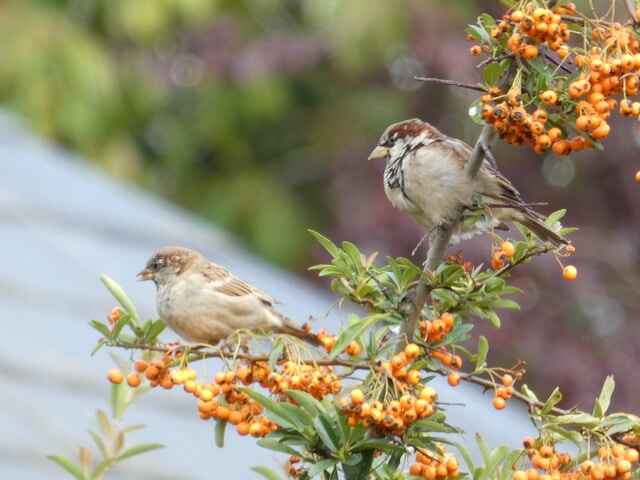
How to Stop Birds From Eating Your Flowers
Birds can be a real nuisance when they start to eat your flowers. It can be difficult to keep them away, but there are a few steps you can take to make sure they don’t get to your blooms.
The first step is to identify the type of bird that is eating your flowers. Different birds have different eating habits, so understanding which kind of bird you are dealing with is essential.
Once you know which type of bird is causing you trouble, you can move onto more specific deterrents. Physical barriers, like chicken wire or netting, can be used to stop birds from getting to your flowers.
Natural deterrents, such as owl decoys, can also be effective in keeping birds away. If these don’t work, you can try sound deterrents, such as a bird call, or visual deterrents like a scarecrow.
Chemical deterrents, like hot sauce or garlic, can also be used to discourage birds from eating your flowers.
Finally, you can set up feeders away from your flower pots to draw birds away. This will give them a more attractive food source, which should help to keep them away from your flowers.
Remember, each method has its pros and cons, so it is important to do your research.
| Method | Description |
|---|---|
| Identify bird | Determine which type of bird is eating your flowers |
| Physical barriers | Chicken wire or netting |
| Natural deterrents | Owl decoys |
| Sound and visual deterrents | Bird call or scarecrow |
| Chemical deterrents | Hot sauce or garlic |
| Feeders | Set up away from flower pots to draw birds away |
How to Stop Birds From Nesting in Your Flower Pots
Stopping birds from nesting in your flower pots can be a tricky task, but it’s not impossible! The first thing you should do is identify what type of bird is visiting your flower pots. This will help you determine the best way to deter them.
Once you know what bird you are dealing with, you can apply various physical, natural, sound, visual or chemical deterrents to discourage them from nesting in your flower pots.
Physical barriers such as netting, chicken wire or mesh can be used to prevent birds from nesting in your flower pots. You can also use natural deterrents such as placing fake owls or snakes around your flower pots to scare away the birds.
Sound deterrents such as loud noises or ultrasonic sound machines can also be used to keep birds away. Visual deterrents such as reflective tape, shiny objects, or motion-activated sprinklers can also be used to scare away birds.
Chemical deterrents such as bird repellents can also be used to discourage birds from nesting in your flower pots.
Finally, you can try setting up feeders and bird baths away from your flower pots to draw birds away from them. This will help keep the birds away from your flower pots and give them an alternative place to feed.
Each of the options available to discourage birds from nesting in your flower pots. However, they should be used with caution and only as a last resort.
Chemical deterrents can be harmful to birds and other wildlife if not applied correctly, so it is important to follow the manufacturer’s instructions carefully.
It’s also important to choose a bird repellent that is safe and effective for the type of bird you are dealing with.
Before using any chemical deterrent, consider trying natural or physical deterrents first.
| Method | Pros | Cons |
|---|---|---|
| Identify what type of bird is visiting your flower pots | Helps you determine the best way to deter them | Time-consuming and requires knowledge of bird identification |
| Physical barriers (netting, chicken wire or mesh) | Can be used to prevent birds from nesting in your flower pots | May not be aesthetically pleasing |
| Natural deterrents (fake owls or snakes) | Can scare away birds | May not be as effective for larger birds or birds that are used to human activity |
| Sound deterrents (loud noises or ultrasonic sound machines) | Can be used to keep birds away | May not be as effective for larger birds or birds that are used to human activity |
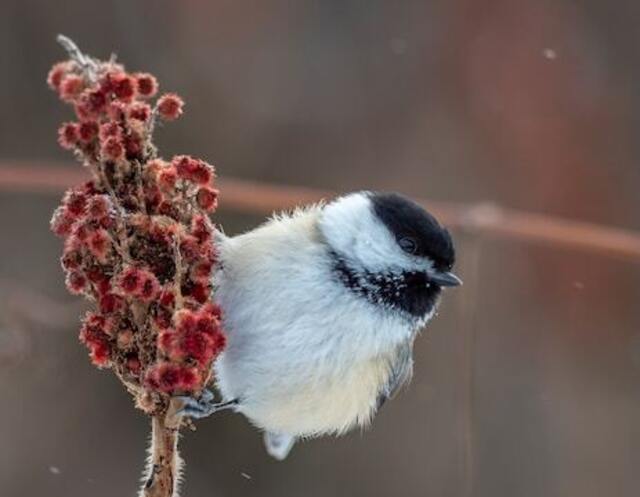
How to Stop Birds From Digging in Your Flower Pots
If you have noticed birds digging through your flower pots, you may be wondering how to stop them. Fortunately, there are several methods you can use to discourage birds from digging in your flower pots.
The first step is to identify what type of bird is visiting your flower pots and then choose the best method for deterring it. You can use physical barriers such as netting or cages to keep birds away from your flower pots. You can also explore natural deterrents such as chili powder or dried blood, or use sound and visual deterrents such as a scarecrow or a motion-activated sprinkler.
Furthermore, you can also apply chemical deterrents such as bird repellent or an ultrasonic bird repellent. Finally, you can set up feeders away from your flower pots to draw the birds away.
Each of these methods has its pros and cons, so it’s important to consider the best option for your situation. With the right combination of methods, you can keep birds away from your flower pots and protect your plants.
| Method | Pros | Cons |
|---|---|---|
| Physical barriers (netting, cages) | Effective at keeping birds away | Can be unsightly and may require frequent maintenance |
| Natural deterrents (chili powder, dried blood) | Safe for plants and environment | May not be effective against all types of birds |
| Sound and visual deterrents (scarecrow, motion-activated sprinkler) | Can be very effective | Can be expensive and may require electricity or batteries |
| Chemical deterrents (bird repellent, ultrasonic bird repellent) | Can be very effective | May be harmful to plants or other wildlife |
| Setting up bird feeders away from flower pots | Can draw birds away from flower pots | May attract other wildlife or pests |
Tips and Tricks to Make Bird-Proofing Your Flower Pots Easier
Bird-proofing your flower pots doesn’t have to be a difficult task. There are a few helpful tips and tricks you can use to make it easier. Firstly, make sure that your bird deterrents are placed correctly.
If the deterrents are too far away from the flower pots, the birds may not be deterred. Secondly, consider using a combination of deterrents to get the most effective results.
For instance, you could use physical barriers, natural deterrents, sound deterrents, and visual deterrents all together.
Thirdly, try to keep your flower pots in areas that are not easily accessible to birds. If they have to work hard to get to your flower pots, they may be less likely to bother them.
Finally, keep an eye on your flower pots regularly, and if you notice any sign of birds, act quickly to deter them. With these tips and tricks, you can bird-proof your flower pots in no time!
| Tip/Trick | Description |
|---|---|
| Place deterrents correctly | Make sure deterrents are close enough to flower pots to be effective |
| Use a combination of deterrents | Employ a variety of methods to maximize effectiveness |
| Keep flower pots in less accessible areas | Place flower pots in areas that are harder for birds to reach |
| Monitor flower pots regularly | Check flower pots often and take action as soon as birds are noticed |
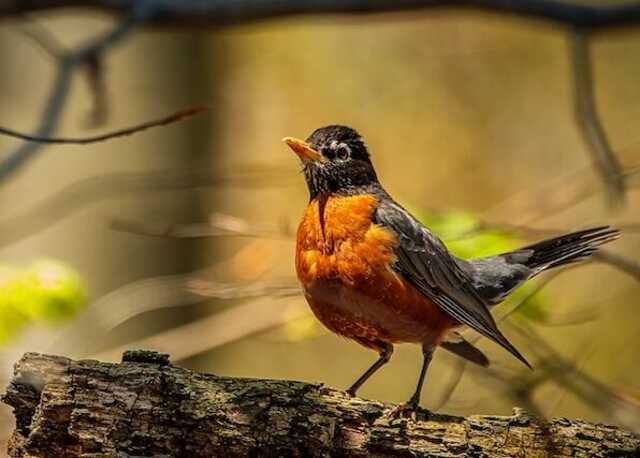
Conclusion
In conclusion, keeping birds out of your flower pots can be a difficult task. There are a variety of methods you can use to deter birds from your plants, including physical barriers, natural deterrents, sound deterrents, visual deterrents, chemical deterrents, and setting up feeders.
Each method has its own pros and cons, so it’s important to consider which one will be the most effective for your particular situation.
Additionally, there are specific tips and tricks you can use to make bird-proofing your flower pots easier.
Ultimately, with the right combination of methods, you can keep birds away from your flower pots and protect your plants.
FAQs: Keeping Birds Out of Your Flower Pots
The FAQ section is your chance to address any lingering questions your readers may have about how to keep birds out of their flower pots. Here, you can provide answers to common questions such as
What is the best way to keep birds away?
The best way to keep birds away will depend on the specific situation, but some effective methods include using physical barriers, natural deterrents, sound or visual deterrents, and chemical deterrents.
What type of deterrents should I use?
The type of deterrents you should use will depend on the type of birds you are trying to keep away and the location of your flowers or containers. Some options include physical barriers, natural deterrents, sound or visual deterrents, and chemical deterrents.
How often do I need to reapply deterrents?
The frequency of reapplication will depend on the specific type of deterrent being used and the weather conditions. For example, some chemical deterrents may need to be reapplied after rain, while physical barriers may not require as frequent maintenance.
How do I protect my containers from birds?
To protect your containers from birds, you can use physical barriers such as netting or mesh, or natural deterrents such as fake owls or snakes. You can also use sound or visual deterrents or chemical repellents.
How do I protect my flowers from birds?
To protect your flowers from birds, you can use physical barriers, natural deterrents, sound or visual deterrents, or chemical repellents. Some options include netting or mesh, fake owls or snakes, reflective tape, and bird repellent sprays.
What is digging up my potted plants at night UK?
The most likely culprit for digging up potted plants at night in the UK is likely to be foxes, badgers, or hedgehogs. These animals are common in the UK and can be attracted to the food or insects in the soil.
How does aluminum foil keep birds away?
Aluminum foil can be used to deter birds by creating a reflective and shiny surface that can startle and scare birds away. The movement and noise of the foil in the wind can also discourage birds from landing on or near the area.
What is a good bird deterrent?
Some effective bird deterrents include physical barriers like netting or mesh, natural deterrents like fake owls or snakes, sound or visual deterrents like reflective tape or motion-activated sprinklers, and chemical deterrents like bird repellent sprays.
Will wind spinners keep birds away?
Wind spinners can be effective in keeping birds away by creating a visual deterrent. The movement and reflective surface of the wind spinner can scare birds away, but their effectiveness may vary depending on the specific type of bird and the location.
What is the best animal repellent for flowers?
The best animal repellent for flowers will depend on the specific animal that is causing the damage. For example, rabbits and deer can be deterred with certain scents or flavors, while cats and dogs can be deterred with certain plants or physical barriers.
Can birds be around flowers?
Yes, birds can be around flowers and may even be attracted to them for their nectar, seeds, or insects. However, some species of birds can cause damage to flowers by eating the blooms or digging in the soil.
Will spraying vinegar keep birds away?
Spraying vinegar may be effective in keeping birds away due to its strong odor and taste. However, vinegar can also damage plants and surfaces, so it should be used with caution.
What shiny things keep birds away?
Shiny objects like reflective tape, mirrors, or CDs can be effective in scaring birds away. The movement and reflective surface can create a visual deterrent that can discourage birds from landing or nesting in the area.
Will Vaseline keep birds away?
Applying Vaseline to surfaces will not keep birds away. It may make the surface slippery and difficult for birds to land on, but it is not an effective long-term deterrent.
Additionally, using Vaseline in outdoor areas can have harmful effects on the environment and wildlife. It’s best to use other physical, natural, or sound deterrents to keep birds away.

